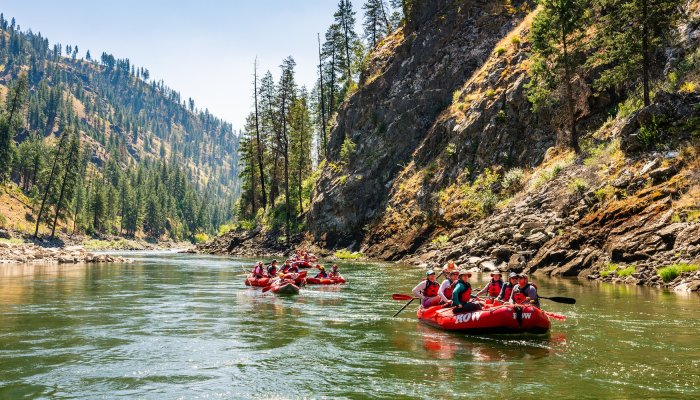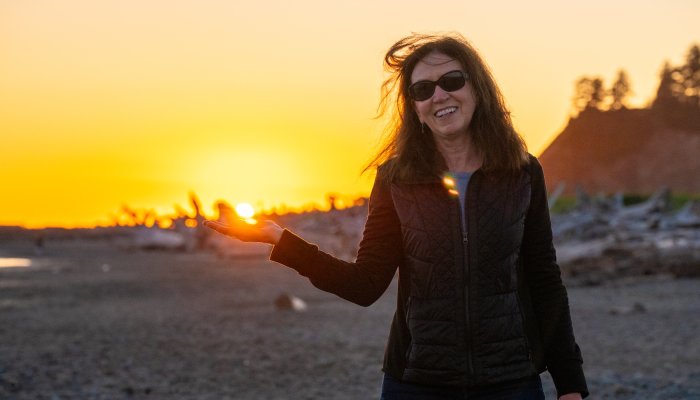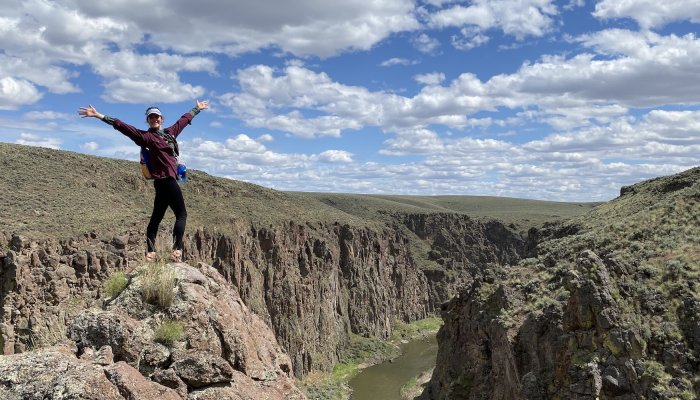The Best Beaches on the Olympic Peninsula
The Olympic Peninsula in Washington State is all about mossy rainforests, alpine lakes, and some of the most iconic beaches in the Pacific Northwest. Instead of a typical beach vacation, imagine days filled with towering sea stacks, driftwood filled shores, and miles of sandy (or rocky) coastlines.
We first started exploring the Peninsula on our e-biking tours, which wind through forests and stretches of this rugged coastline. We quickly fell in love with this corner of Washington, and highly reccomend exploring this unique area. Whether you're looking for a quick detour near Forks or planning a coastal backpacking trip, the beaches of Olympic National Park offer a little something for everyone.
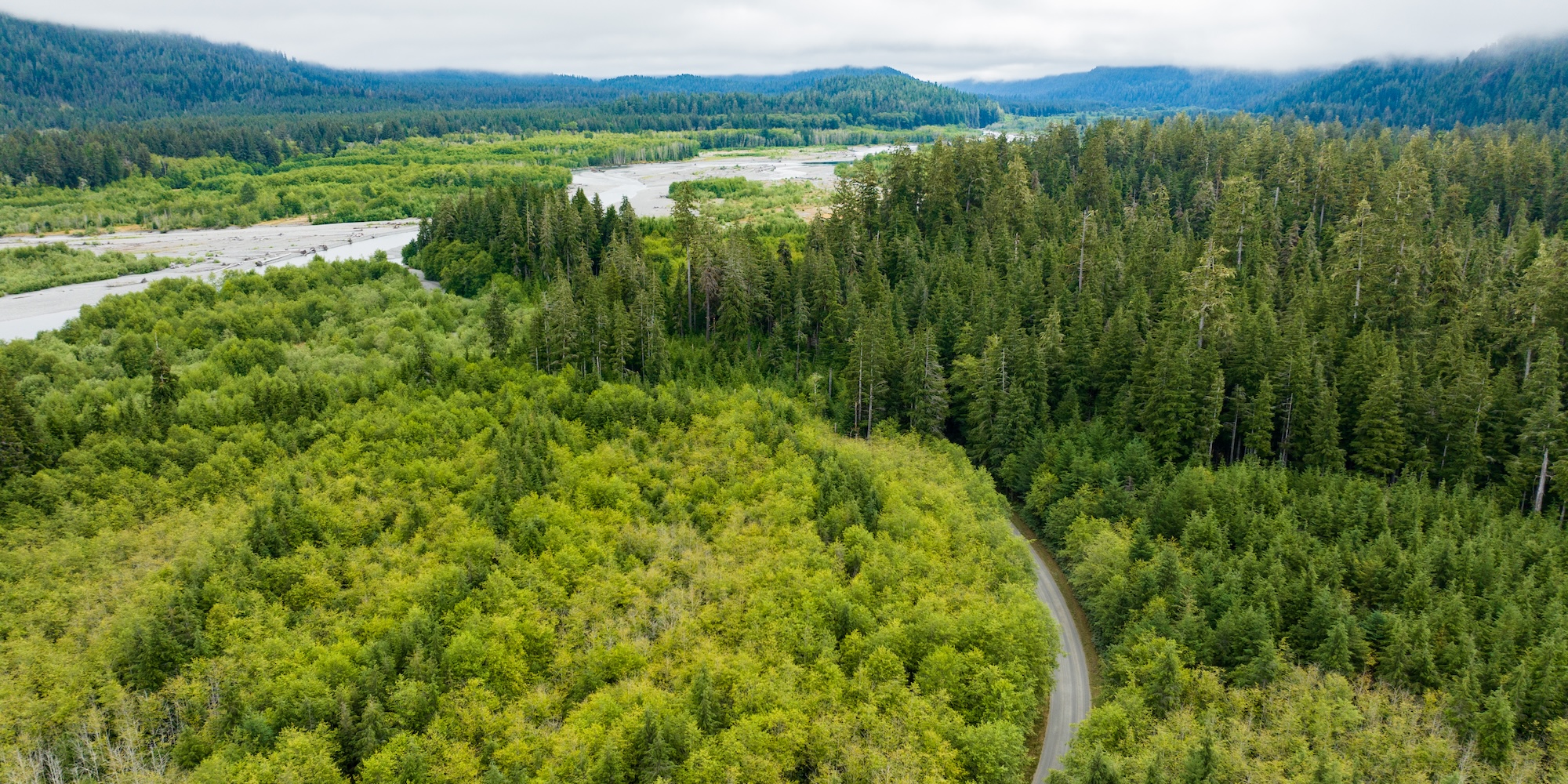
Getting to the Olympic Peninsula
Getting to the Olympic Peninsula is part of the adventure because there aren’t any major airports in the area. If you're flying to Washington, Seattle-Tacoma International Airport (SEA) is your closest major hub. From there, it’s about a 3–5 hour drive depending on your final destination and how many scenic stops you make along the way. Visitors coming from the Seattle area will take the Edmonds-Kingston ferry across Puget Sound or drive south through Tacoma to make the journey west.
Once you arrive, there are plenty of ways to explore. From day hikes and beach walks to our Olympic Peninsula E-Bike Tour, which follows the Olympic Discovery Trail and makes stops at some of these incredible coastal spots.
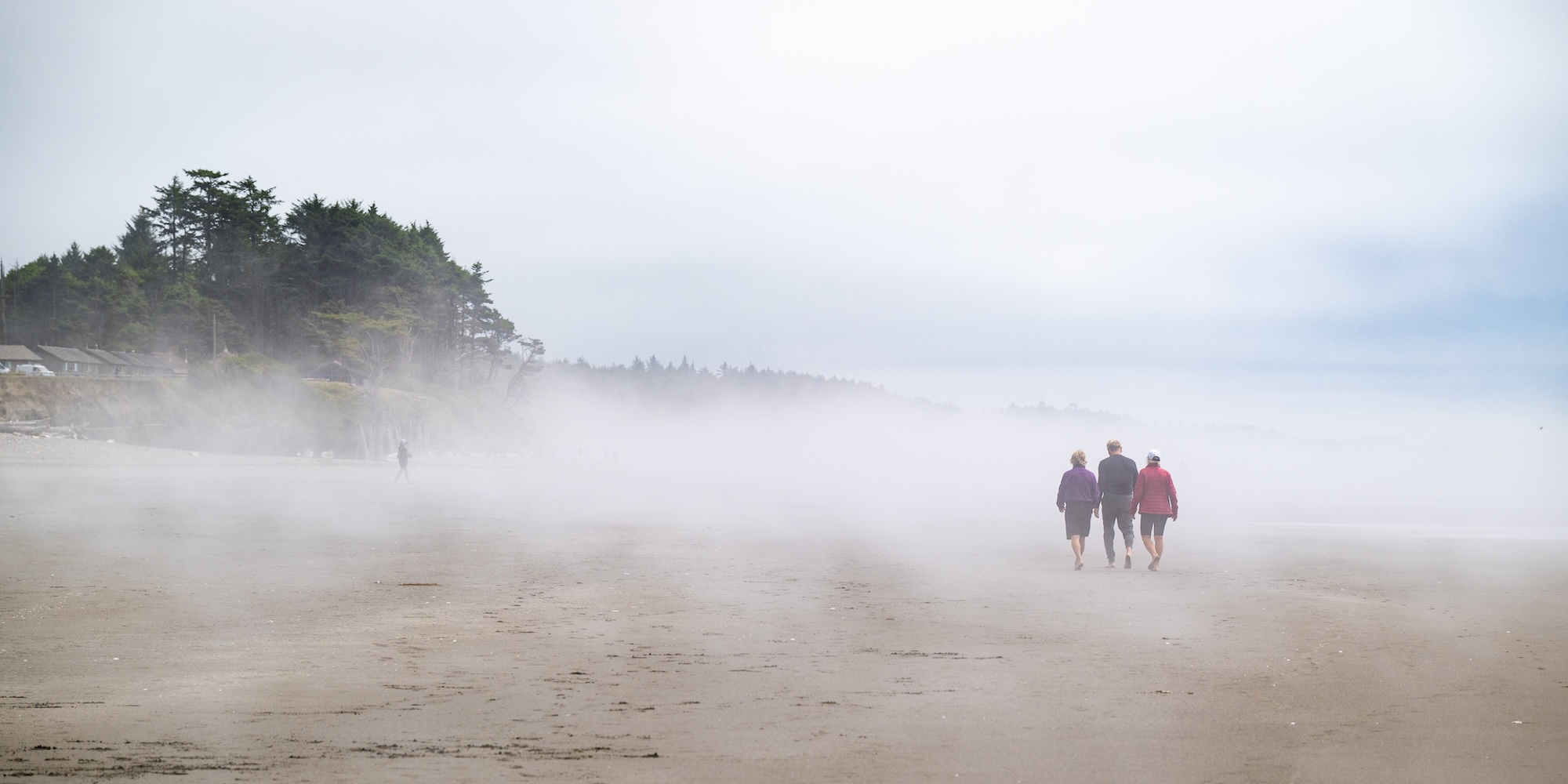
Weather on the Olympic Peninsula & What to Pack for the Beach
The Olympic Peninsula weather can change quickly, even in summer. Morning fog might give way to a hot and sunny afternoon, or a light drizzle might decide to stick around all day. That’s part of the magic. No matter what time of year you’re visiting the Olympic Peninsula, it’s important to pack lots of layers and, most importantly, your raincoat.
Here's a quick snapshot of what to pack for a trip to the Olympic Peninsula:
- Rain jacket - this is a must no matter what time of year you’re visiting
- Warm layers - think fleece or a puffy for evenings
- Waterproof hiking boots or shoes
- Sandals
- Quick-dry clothes
- Sunscreen and sunglasses
- Tide charts if you’re hiking or camping near the water
- Snacks and water - some of these beaches are remote
- A picnic blanket for the beach
- Binoculars - if you’re lucky, you might spot orcas or grey whales in the distance
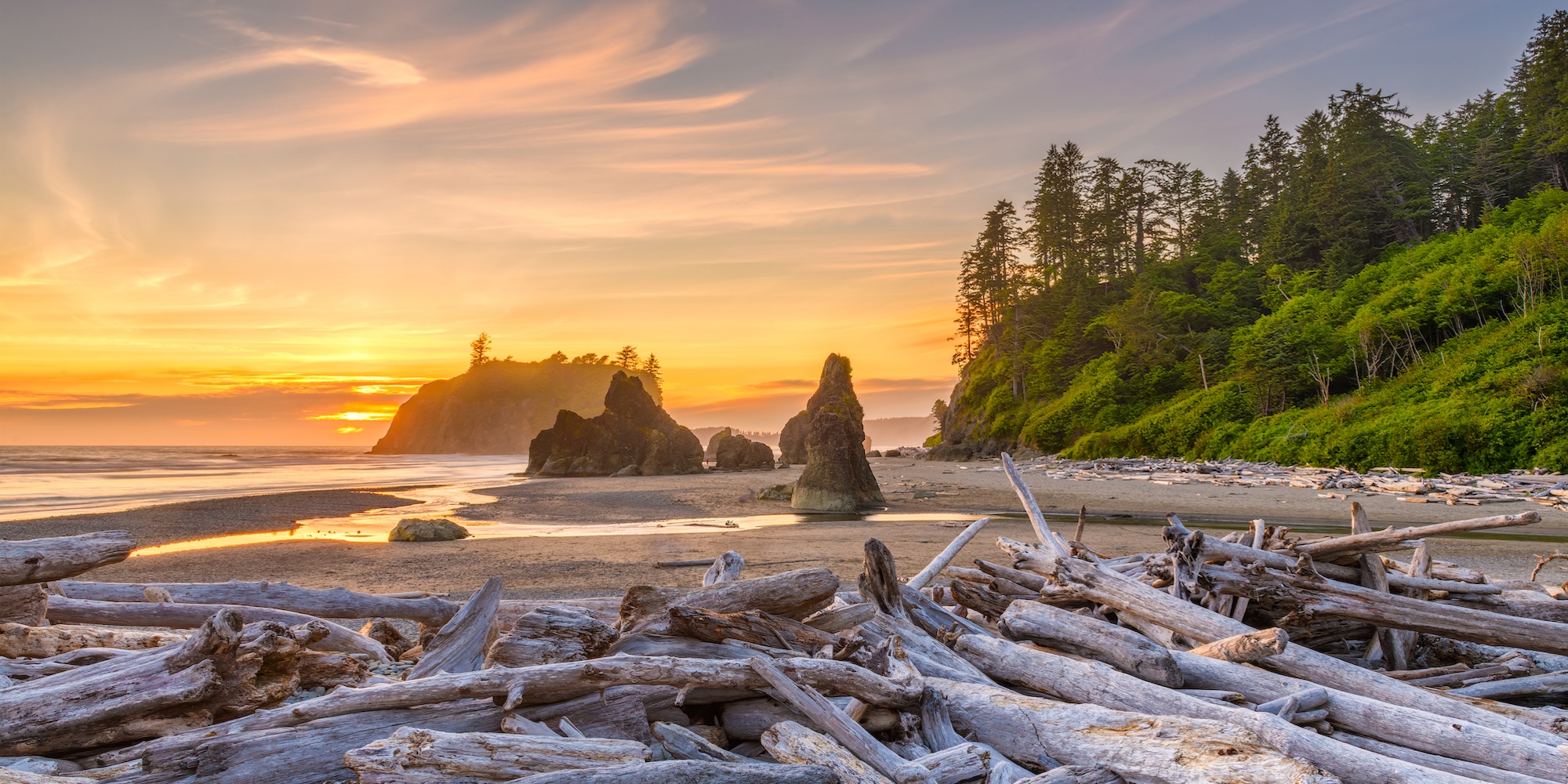
Ruby Beach
You’ll be hard-pressed to research beaches on the Olympic Peninsula without stumbling across Ruby Beach. And for good reason. This iconic beach is famous for its dramatic sea stacks, colorful rocks, and misty shores. Ruby Beach is especially fun at low tide, when tide pools appear and you can spend hours spotting sea stars, anemones, and other PNW tide pool creatures.
This beach sits just off Highway 101, making it one of the easiest stops to reach with a rental car or any vehicle without four-wheel drive. If you’re staying in Forks, Ruby Beach is only about 40 minutes south. A short, well-maintained trail takes you from the parking lot down to the shore, where you can either stay close to the trail head or go on a longer walk along the beach.
Ruby Beach is a popular destination, especially in the summer, so you’ll almost always see other people around. Luckily the shoreline expands far in both directions so it’s usually possible to find your own quiet spot to take it all in.
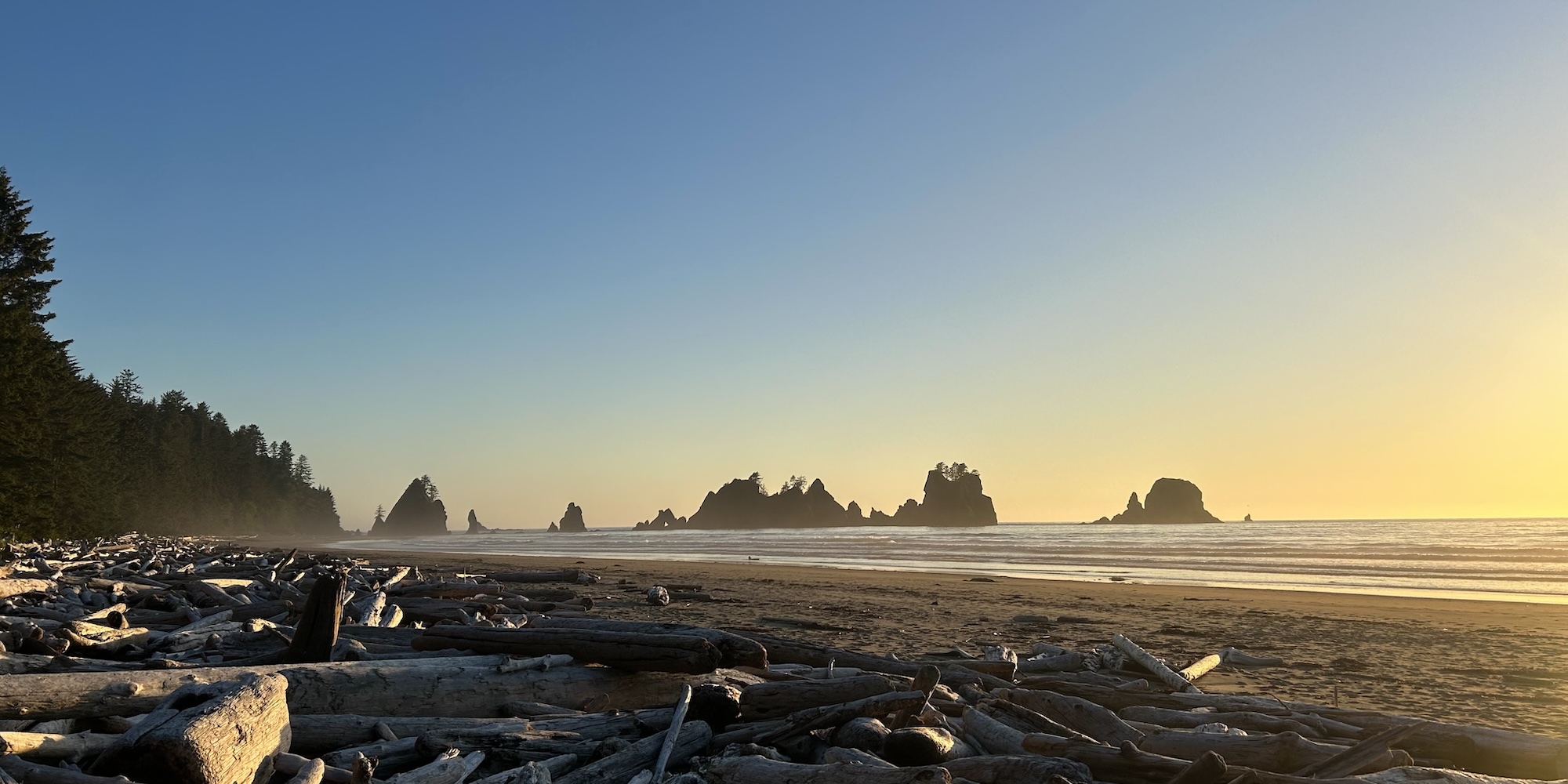
Shi Shi Beach
Shi Shi Beach (pronounced shy shy) is a bit more remote, and that’s exactly why people love it. It’s tucked into the northwestern edge of the Olympic Peninsula and is part of the Makah Reservation. Before you get to Shi Shi, you’ll need to purchase a Makah Recreation Pass, which is required for parking and access to the beach. Passes can be picked up along your drive in Neah Bay at local businesses, gas stations in Neah Bay, or the Makah Tribal Center. Makah Recreation Passes cost $20 per car as of 2025 and are valid for one year.
When you make it to the coastline, you’ll need to park at the trailhead and hike in to access Shi Shi. It’s about 2 miles to the beach, and roughly 4 miles round trip if you want to explore further south.This trail is infamous for being muddy–yes, even in the summer. Plan accordingly with waterproof boots or sandals if you’re okay getting dirty.
Once you make it through the forest, you’re rewarded with a truly wild coastline. There are sea stacks rising from the ocean, driftwood scattered across the beach, and miles of sand lined with old growth forest. It’s a sight worth seeing.
Shi Shi is also a favorite spot for beach camping, with primitive campsites tucked into the trees just above the high tide line. If you’d like to camp here, plan ahead and purchase an Olympic National Park Wilderness Permit before your trip.
Shi Shi is also the start to one of the park’s popular backpacking adventures—the North Coast Route. If you’re heading out on this trail, make sure you have the necessary wilderness permits, along with tide charts, bear canisters, and detailed maps. This stretch of coastline demands knowledge and respect, but it rewards those who come prepared with an unforgettable wilderness experience.
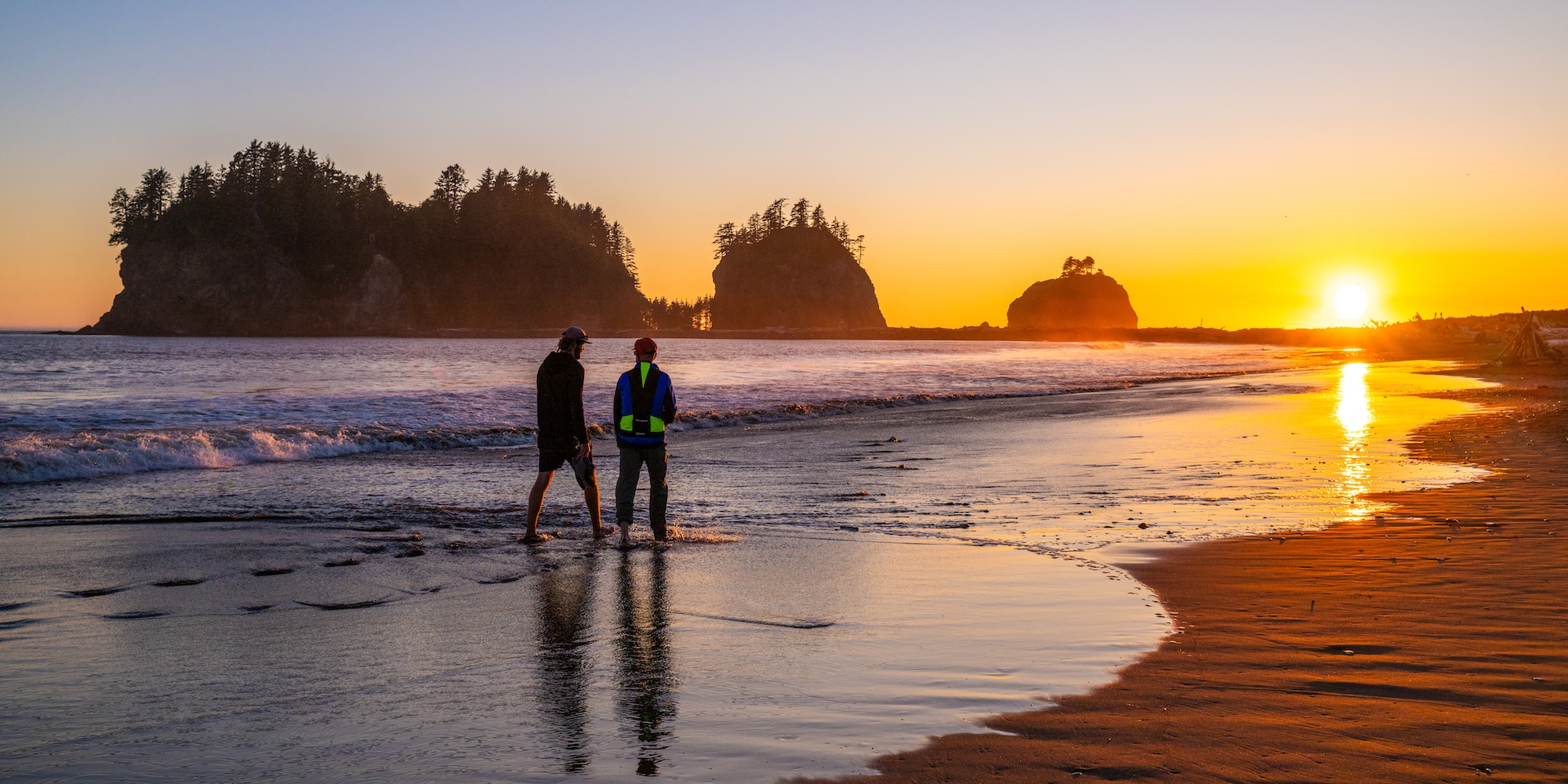
La Push
La Push is one of the most beloved beaches near the town of Forks. The beach itself is only about 25 minutes from town. When you arrive, there’s a large parking lot and an easy to follow trail that takes you down to the beach.
What makes La Push so special is its balance of accessibility and wild beauty. You still get that remote feel, but the walk from the parking lot to the sandy beach is manageable for most travelers. It’s a favorite spot for sunset photography, surfing, or just soaking in that classic PNW vibe. It’s also worth noting that La Push is one of the few beaches on the Peninsula that is dog friendly.
La Push gained widespread attention after the release of the Twilight films in 2008. The nearby town of Forks, featured prominently in the series, has since become a cultural phenomenon that has drawn fans from around the world to this misty corner of the Pacific Northwest.
Each year, many visitors make the journey to see Forks and explore the beaches mentioned in the series, with La Push being a top highlight. If you’re a Twilight fan planning your own visit, it’s worth noting that while La Push is referenced in the films, the beach scenes were actually filmed along the Oregon coast. That said, La Push is every bit as atmospheric as what you saw on screen.
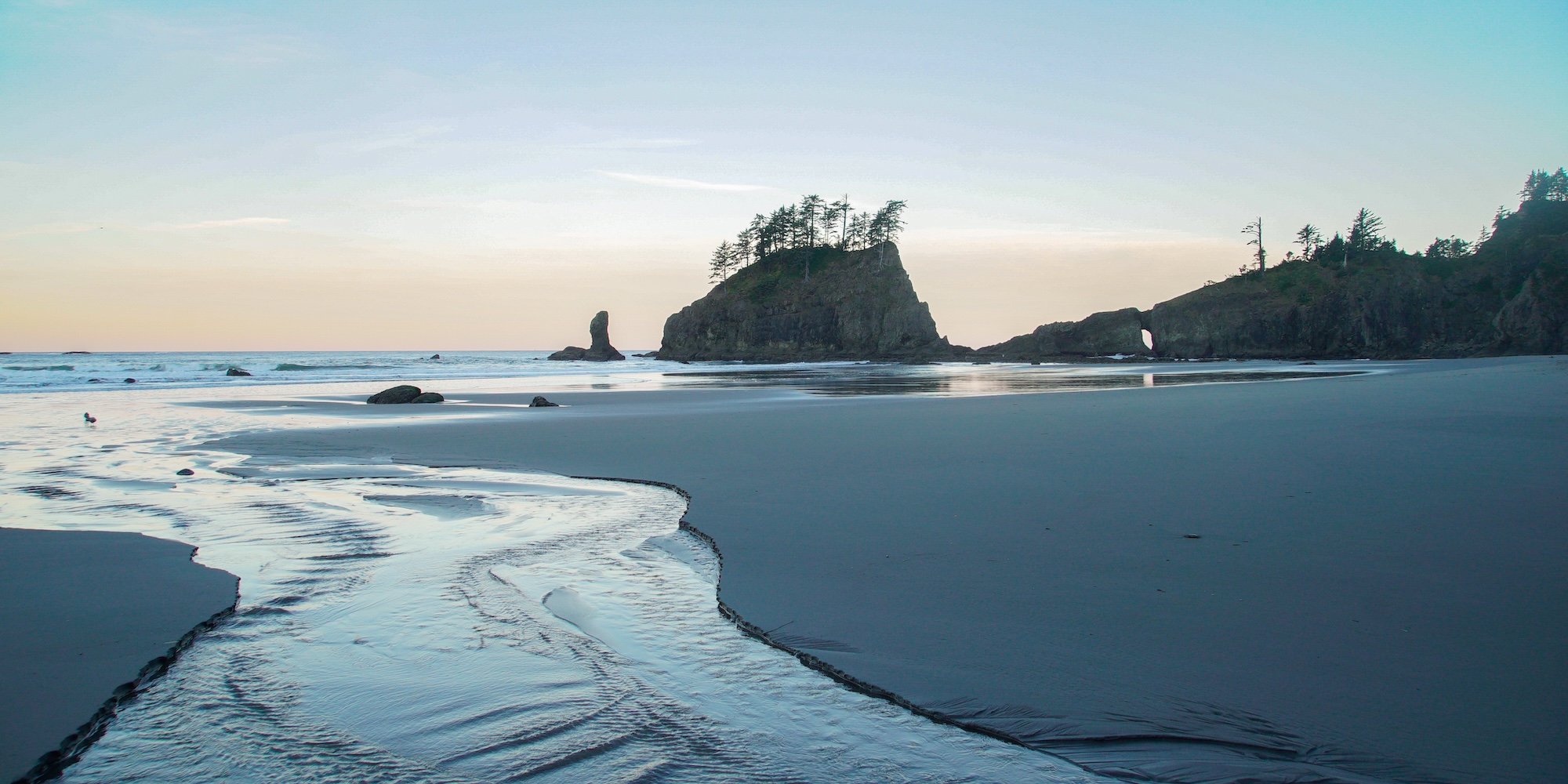
Second Beach
Second Beach, only a few miles away from La Push, requires a short hike to reach. About a 1 mile each way. The hike itself is one of the best parts of visiting Second Beach. You’ll wander through a well maintained trail, covered by dense forest that offers some rain coverage if you’re visiting during a rainy day, until you reach scenic Second Beach.
Second Beach is known for its dramatic sea stack just off shore. The tide pools at Second Beach are worth expoloring, at low tide you can explore the base of the sea stack in search of starfish and anemones. If you’re visiting during high tide, you might want to bring a picnic blanket along with some snacks to soak in the views while watching for seals in the water. If you’re lucky, you might even catch a glimpse of Orcas or Gray whales in the distance!
Camping at Second Beach is a bucket-list-worthy experience. During the summer and fall months, you'll often find scattered tents along the shoreline and tree line. The wide, sandy beach offers plenty of space to spread out, whether you’re pitching a tent closer to the forest or in the sand. Keep in mind that you'll want to set up camp above the high water line to avoid having to move when the tide comes in. To camp here, you’ll need to secure an Olympic National Park Wilderness Permit in advance. Permits are $8 per person, with an additional $6 reservation fee. Permits can fill up quickly in the summer, so plan in advance!
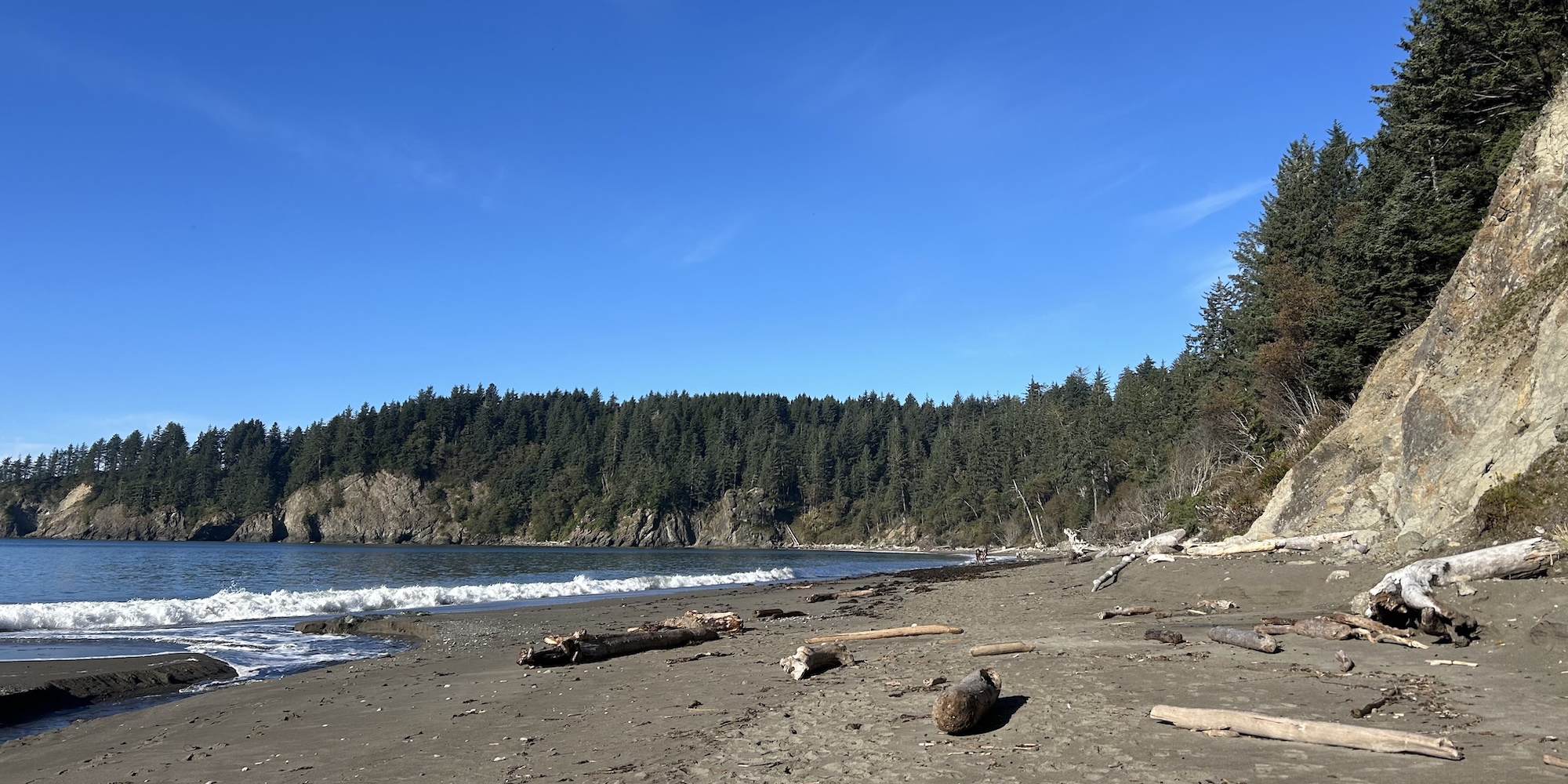
Third Beach
If you’re looking for a less popular stretch of coastline, Third Beach is a great pick. The trail is about 1.4 miles each way, winding through coastal forest before dropping down roughly 200 feet to the sand. Once you make it over the driftwood at the entrance, you’ll find yourself taking in wide ocean views.
Like Shi Shi and Second Beach, there are tide pools to explore at low tide and dramatic views to take in during any time of day. If you continue south toward Strawberry Point on a clear day you’ll see a glimpse of the Giants Graveyard, a cluster of rugged sea stacks just offshore. Just be sure to bring a tide chart if you’re planning to venture further, since certain sections of the coast are only passable at low tide.
For those interested in camping, most sites are right on the beach above the high tide line, though you’ll need a Wilderness Camping Permit to stay overnight. Space can be limited in the summer, so plan ahead.
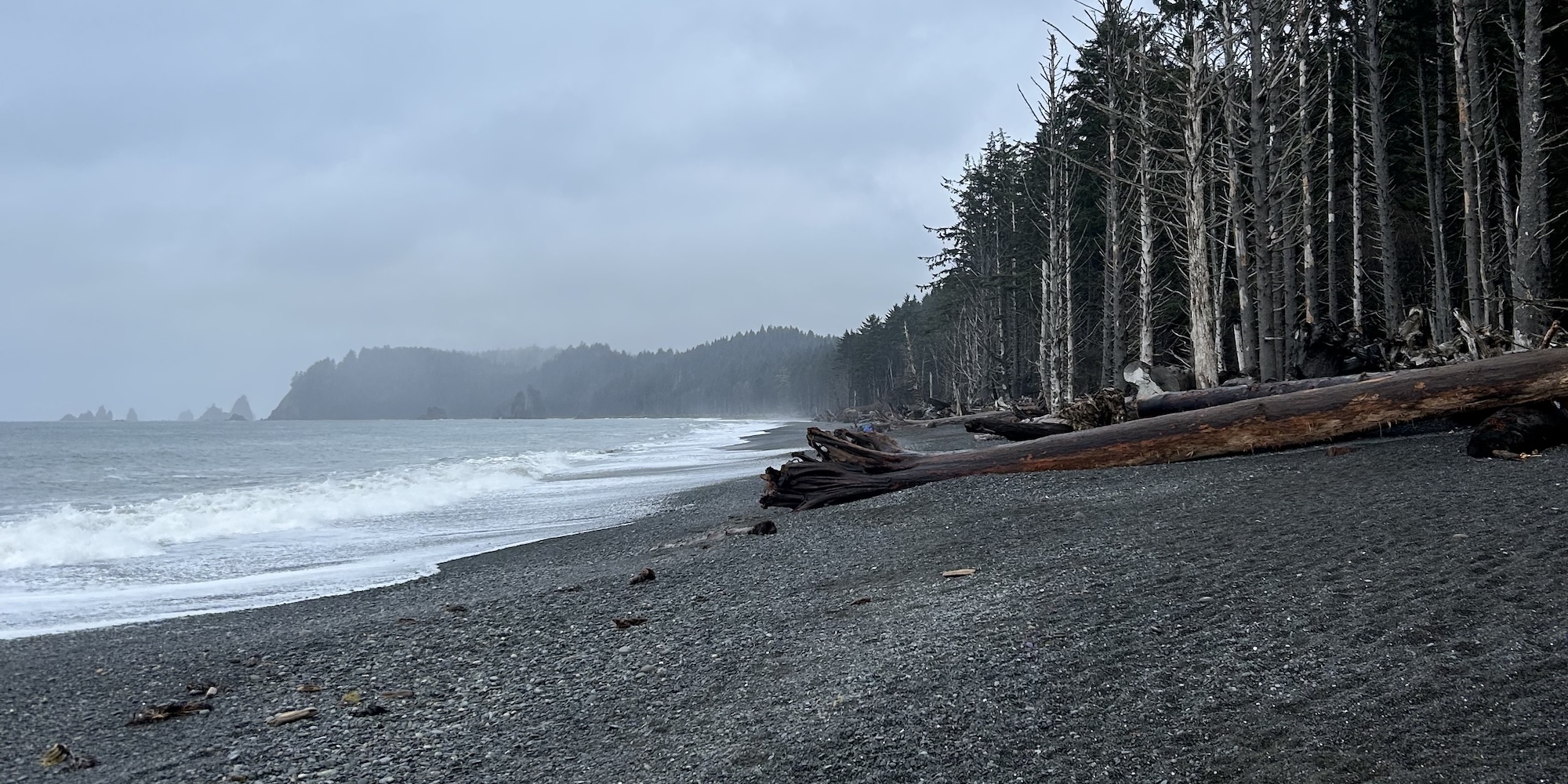
Rialto Beach
Located just a short drive from Forks (about 20 minutes), Rialto is one of the easiest beaches to access if you’re staying in town. Rialto Beach gives off classic Pacific Northwest vibes from the moment you step out of the car. Towering spruce trees frame a wide, rocky beach, with large crashing waves hitting the shore.
This beach is known for its sea stacks, large waves, and the nearby Hole-in-the-Wall, a natural rock arch that’s accessible during low tide (about 1.5 miles north along the beach). It’s a worth-while walk, just be sure that you’re familiar with the tide charts and are visiting at low tide.
The beach is rocky, so come prepared with sturdy shoes. On rainy days, Rialto tends to be less muddy than some of the other nearby beaches, making it a solid pick in rainy weather.
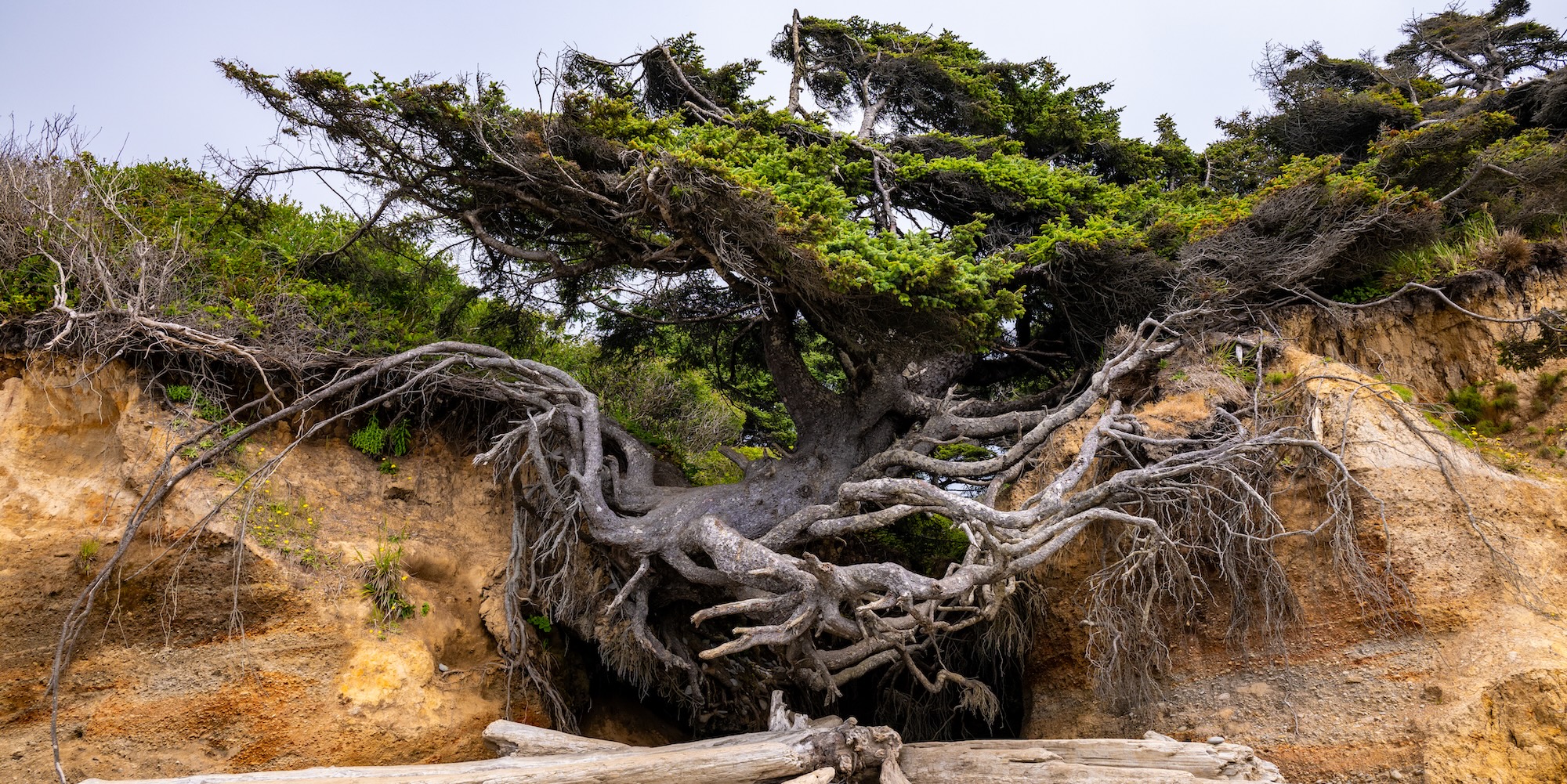
Kalaloch Beach & The Tree of Life
Kalaloch Beach is part of the southern section of Olympic National Park and is one of the few beaches with easy access and nearby amenities, including a lodge and campground.
The beach itself is expansive and sandy, great for long walks or family-friendly beach days in the summer. But the real star? The Tree of Life. This tree is a defiant Sitka spruce suspended between two cliffs, its roots exposed but somehow still thriving. It’s one of those surreal landmarks that feels almost too perfect to be real and is definitely worth a visit if you’re heading down the coast.
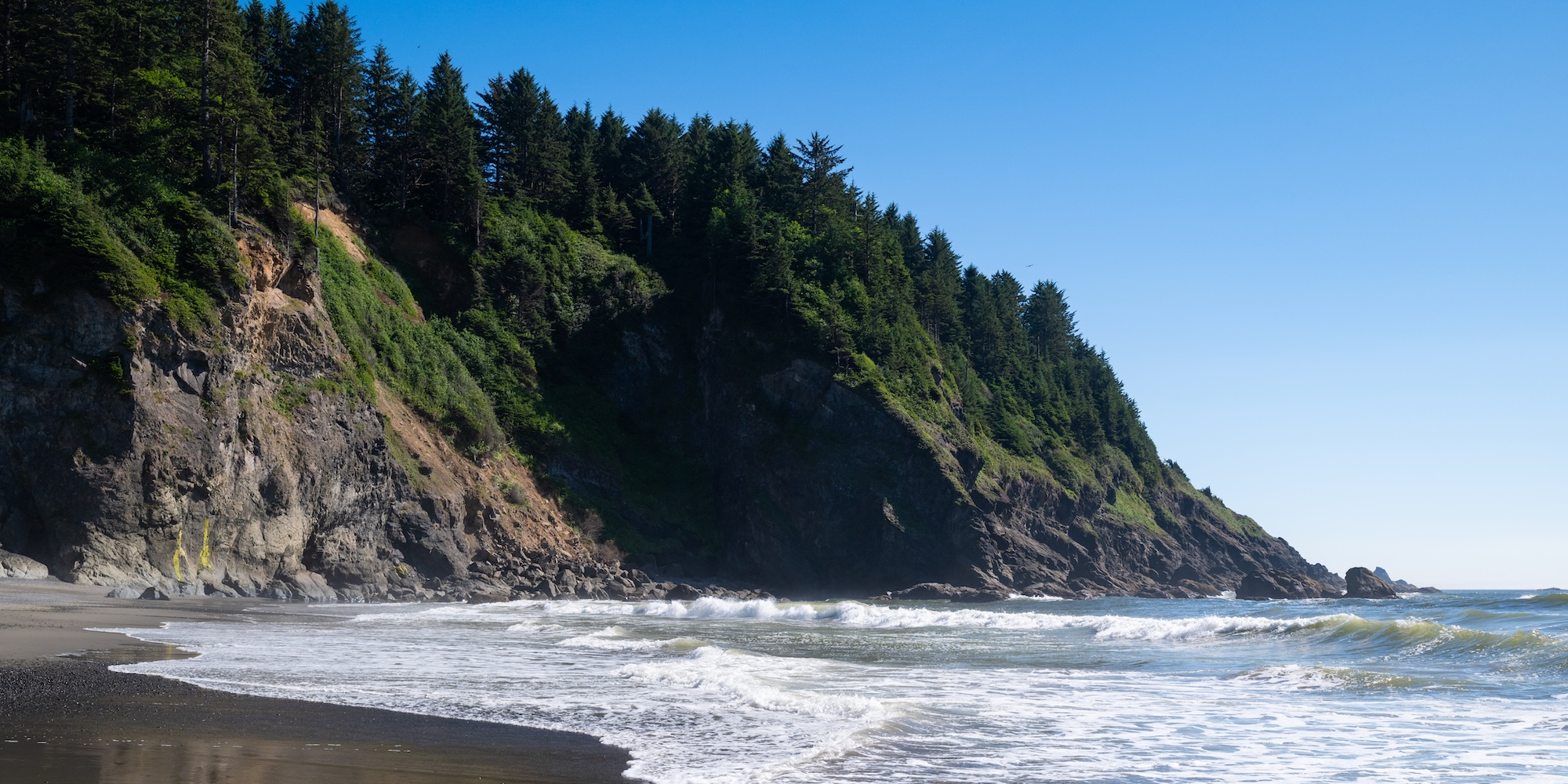
Your Olympic Peninsula Beach Adventure Starts Here
The beaches of the Olympic Peninsula each have their own personality. Some are quick stops right off the highway, while others take muddy hikes and tide chart planning to reach. That’s part of the fun. Whether you’re chasing tide pools at Ruby, camping under the stars at Shi Shi, or wandering out to Hole-in-the-Wall at Rialto, these shores give you a true taste of the wild Pacific Northwest. Pack your layers, bring your curiosity, and let the coast surprise you.

